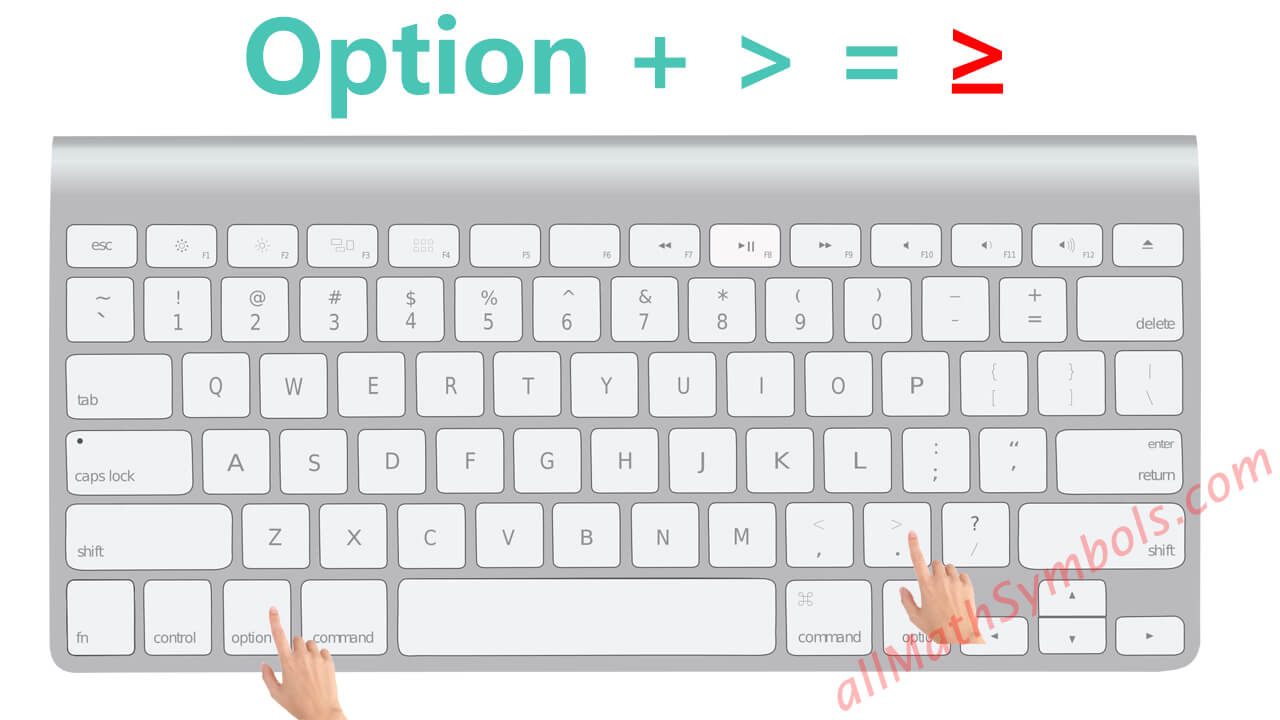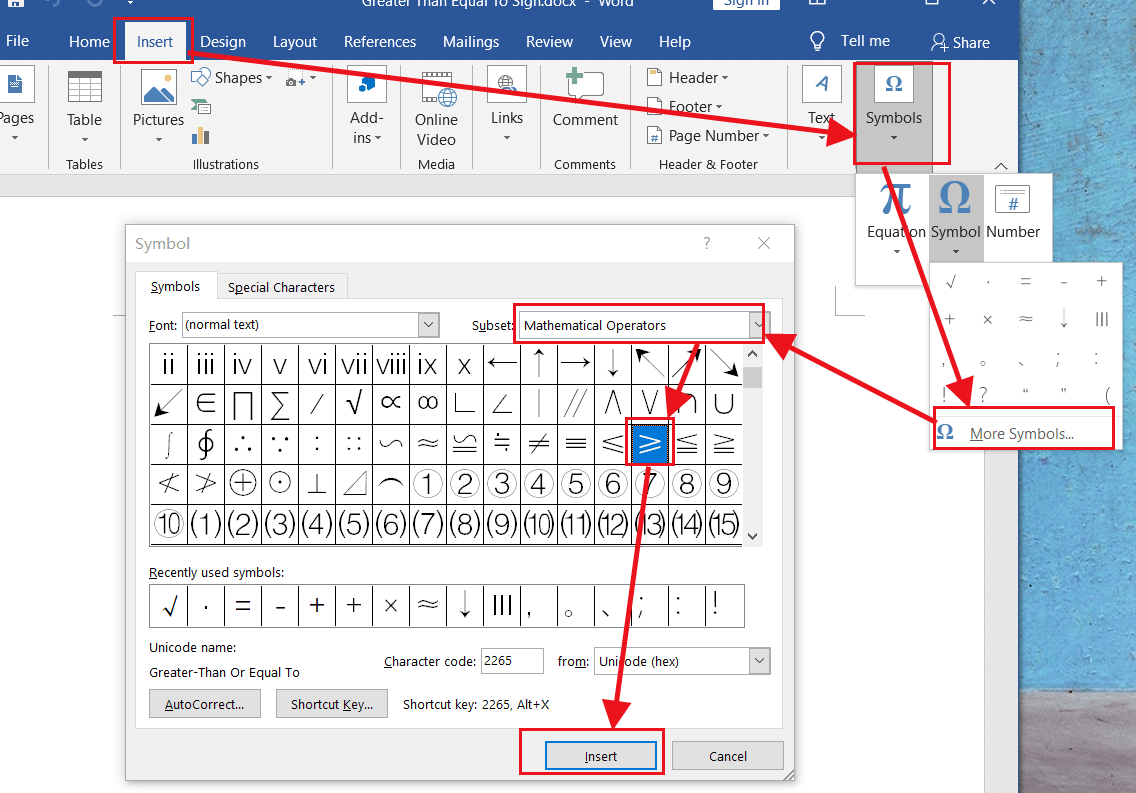≥
The greater than equal to sign is used side by side with the greater than sign. it is one of the mathematical notations that falls under the inequality signs category and if one spends time to understand it, it is safe to say that its use is prevalent in our day-to-day life.
An example could be the minimum age to do a certain task or the minimum height to go on a ride. Let’s say the minimum age set to use the gym is 15 years. This essentially means that only those people can use the gym facility that are either more than 15 years of age or who are currently 15 years of age that means
Age to use the gym ≥ 15
The greater than equal to actually means greater than or equal to. It suggests that the number or variable on the left can either be greater than the number on the right or can also be equal to the number or variable on the right.
For example
2a ≥2b
This means that 2a can either be greater than or it can be equal to 2b. 2a can be greater than 2b if the value of ‘a’ is greater than the value of b and 2a and 2b can be equal only in one condition which is that the value of ‘a’ and b is equal to each other.
Now that we have established what is the greater than equal to sign, our next concern would be how to and in what situations can this symbol be used. The greater than equal to sign can be used when we are trying to set a minimum value for anything.
For example, if a minimum number of 15 participants are needed from each class to participate in a school competition then that means that either there can be 15 participants or any number of participants greater than 15 in the competition. If there are 14 participants i.e. not 15 then none of the students can participate. So we can represent this whole situation with the greater than equal to sign as
Participants from each class ≥ 15
Another situation where this sign can be used is when we are taking variables into account. Variables can be represented by symbols or letters and they have a value assigned to them. So the greater than equal sign can be used based on the fact that two terms can be equal to each other or one can be greater than the other depending on the value of the variable.
For example,
6c ≥ 3b
If we take b=2 and c=1 then 6c will be equal to 3b but if we take c=3 and b=2 then 6c will be greater than 3b.
Another situation in which the greater than equal to sign can be used is when we need to set a limit i.e. if we want to set two values as limits and take every value that falls between those two values into consideration.
For example,
2 ≥ y ≥ -2
This means that the value of y should be between 2 and -2 and it can also be 2 or -2 i.e. inclusive of both values.
Now that we know what this symbol means and we also know in what situations this symbol can be used, all that is left is for us to find out how exactly we can type this symbol on various digital devices.
The greater than or equal to is one of the complex symbols and inserting it is a rather long process irrespective of the type of device you are using. To make things easier for users and to make their experience time-efficient there are shortcodes to add such symbols.


